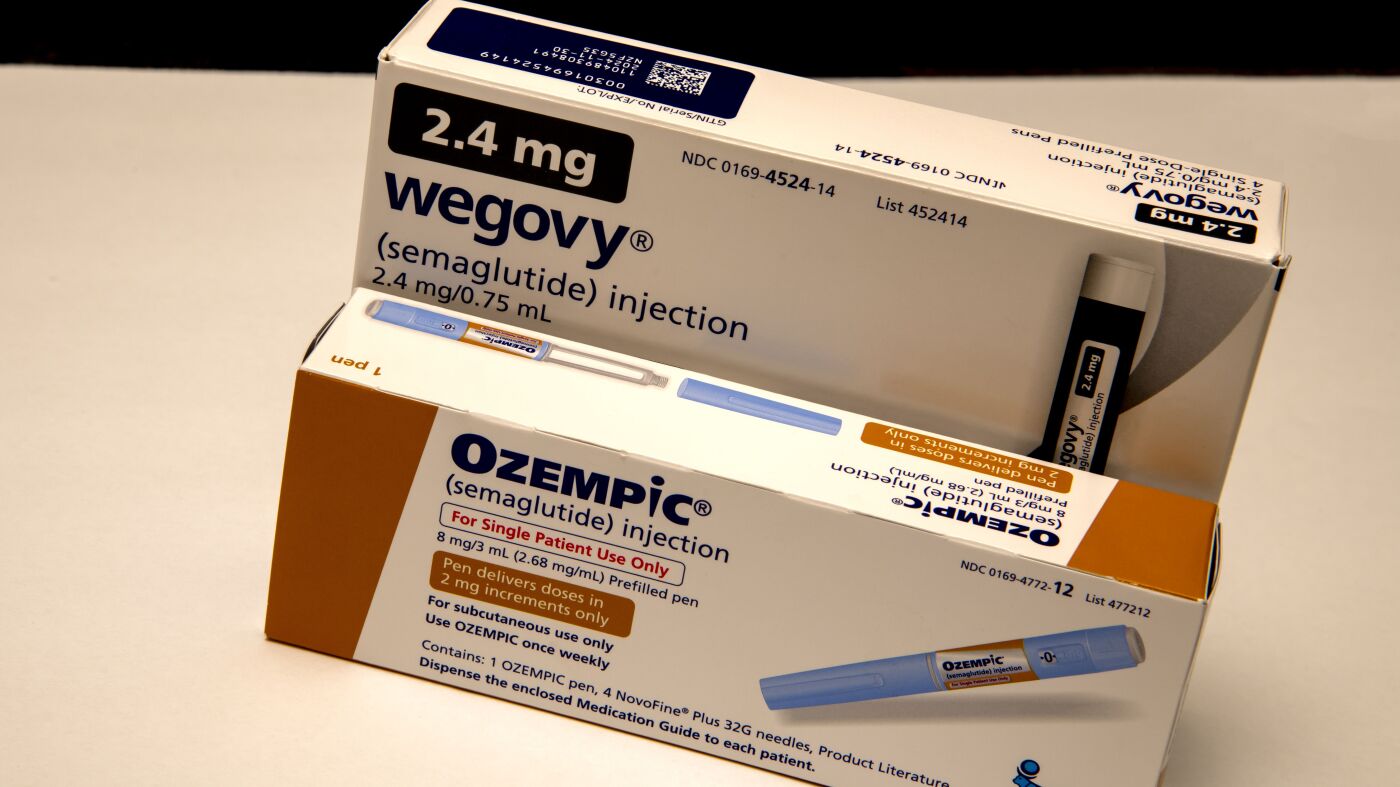Surging demand for new medicines to treat obesity and diabetes make it hard for many patients to get them.
Michael Siluk/Getty Images
hide caption
toggle caption
Michael Siluk/Getty Images
Bill Coombs, who lives in Boston’s South End, has lost 28 pounds since he started using the obesity drug Wegovy.
But when he went to refill his prescription in late August, things didn’t go as planned.
“I take it every Wednesday. So this Monday my prescription was up,” he says. “So I called to fill my prescription, and they said, ‘You’re fine.’ When I went in … to get it, they said they’re out and they’re going to be out for the foreseeable future.”
He’d been worried about missing doses of the drug after a friend had similar trouble.
Then, somehow, the pharmacist found some Wegovy, but Coombs doesn’t know how.
“I did end up getting it, which is fortunate, but I do worry about it,” he says. “I do worry about what’s going to happen in a month.”
The massive popularity of Ozempic, Wegovy, Mounjaro and Zepbound has meant the drugs have been in and out of short supply for more than a year, as the drugs’ makers have been struggling to keep up with skyrocketing demand.
Novo Nordisk and Eli Lilly are the pharmaceutical companies that make the popular medications for diabetes and obesity. They recently said that their drugs are “available” again with the exception of the starting dose of Novo Nordisk’s Wegovy.
But patients like Coombs are still having trouble at the pharmacy counter.
Drugs remain hard to get
David Knapp takes Lilly’s Mounjaro for his Type 2 diabetes and has a podcast, blog and YouTube channel called On the Pen. Patients taking the drugs reach out to him every week to share their experiences coping with shortages.
“They’re doing the tricks, right? All the tricks,” he says. “They’re going up a dose. They’re moving back a dose. Some people I’ve heard calling 100 pharmacies in their state, just trying to find their dose.”
He says many patients took offense at drugmakers’ declarations that the injections are available again.
And the Food and Drug Administration has kept the drugs on its official shortage list. The agency says it needs to be sure the drug companies can meet demand. That includes verifying the manufacturers have a supply cushion of the drugs and that the companies have fulfilled all their backorders.
It’s not clear how long the process will take.
Pharmacies out of stock
Right now, pharmacists can’t be sure they’ll get their full orders from drug wholesalers, says Erin Fox, who tracks drug shortages as part of the American Society of Health-System Pharmacists.
“That can mean that if you might order 20, but you might only get 10,” she explains.
When wholesalers allocate their drug supplies like that, she says it usually means there isn’t enough of the drug to go around.
The supply chain is complex for refrigerated medicines like Mounjaro and Zepbound, Eli Lilly spokesperson Rachel Sorvig wrote in an email to NPR.
“There may be many reasons why a particular pharmacy does not have a particular dose of the medicine in stock,” Sorvig says. “Lilly recommends that patients contact their pharmacy approximately one week before the medicine is needed to start the prescription refill process sooner. ”
Novo Nordisk spokesperson Jamie Bennett told NPR the company can’t control which pharmacies or patients get Ozempic in the U.S. The company is limiting how much of the starting dose of Wegovy it produces to focus on supplying the drug to patients already on it and who work their way up to higher doses for continuing treatment.
Signs the shortage is easing
The drug companies are spending billions of dollars building new factories and expanding production.
Novo Nordisk told investors in August that it has been able to double U.S. Wegovy prescriptions this year.
“While demand is still expected to exceed supply, we grow more confident in our ability to supply,” Novo Nordisk Executive Vice President of North America Operations Doug Langa said on the call with investors.
For Lilly’s part, the company tells NPR its factories that make these drugs are running 24 hours a day, seven days a week, 365 days a year.
Drug samples make a comeback
Pharmaceutical sales reps continued visiting doctors’ offices despite the shortages, but they stopped bringing free samples with them, says Dr. Scott Isaacs, the president-elect of the American Association of Clinical Endocrinology.
One sign the shortages may be easing? The samples are back.
“They’re in our office frequently,” Isaacs says of the sales reps. “They’re bringing samples. They’re bringing brochures. And they’re telling us that there are no shortages.”
The shift has made him optimistic about the drug supply.
“It does encourage me to write prescriptions for medications that I was previously not — because I knew the patient wouldn’t be able to get the medication,” he says. “But unfortunately, sometimes you still write the prescription, and the patient still can’t get the prescription.”


